Why design matters
There is no one-size-fits-all solution for improving early childhood development in cities. Every community and context has different considerations and norms to be carefully weighed, alongside those of a safe, durable and sustainable design that maximises the social, environmental and economic return on investment. Making design decisions based on detailed understanding of your project context and community, being open-minded and collaborative, and placing creativity at the centre of your approach, is critical to effective and context-sensitive design that will generate a lasting positive change.
Follow the steps below to put this into practice!
“It’s really designing with communities to understand what they need and to make sure whatever we’re proposing is tailored to their needs”
– Jose Chong, Programme Management Officer at UN-HABITAT
Design Life-cycle steps
STEP
Step 1
Visioning workshop
Imagine a vision with children, caregivers and pregnant women
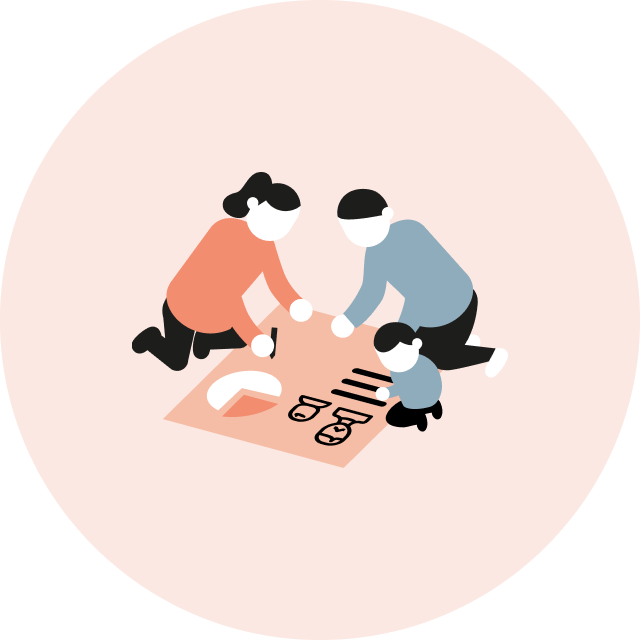
Unifying a community and other stakeholders around a common vision has the power to increase the deliverability and resilience of your project. It is important to create a safe space for these activities to enable different groups to feel comfortable to share their ideas, as well as to feel included and excited about possible futures. It is difficult to imagine environments that are different from the everyday life we are used to. So, the task of the designer is to guide and stimulate others in the envisioning of what could be possible. The way children, adults and technical experts imagine possible futures differs, so consider how you can bring these different imaginations together. When co-creating a vision for your project, think both about the immediate future, such as directly after the completion, and the distant future spanning multiple generations. Be sure that the shared vision reflects not just what the city or neighbourhood would look like, but also what types of practices and behaviours of children, caregivers, and others that will be enabled and encouraged.

TOOLS
The purpose of this tool is to outline a vision for child and family-friendly development.
This tool can help you see the core challenge from different perspectives. It can also help you visualise the wider context and clarify what to prioritise as the main focus of your work.

GET INSPIRED
Check the Nature-based Play publication which offers a set of actions that could be undertaken by different stakeholders, as well as best-practice examples of benefits that nature-based play generates for communities, and for our planet. This can serve as inspiration for a vision or its elements.
Read how the program “De Cero a Siempre” (From Zero to Forever) in Colombia developed a vision for promoting and guaranteeing the development of early childhood at national level.
Read about this historic example of child-centred activism in The Netherlands, where parents came together under a vision for safer cities for their children. The grassroots movement named “Stop de Kindermoord” advocated for a reduction of the presence and speed of cars in Dutch cities.
Step 2
Design scoping
Translate challenges and opportunities into design ideas

The knowledge that you gather in the Understand phase and visioning sessions will enable you to identify many opportunities for improving childhood experiences. Prioritisation sifting is a step in every design process that helps define a design brief that maximises positive impact against the aims, in a specific place and timeframe. To define the design brief, you can use the Proximity of Care Framework to map your priorities against its dimensions and goals and verify if they are addressing key aspects of early childhood development. You can then compare different options for critical elements of your project, such as potential locations, community members benefiting, services provided, cost and time. You can then rank or review each, firstly, on how they meet the needs and vision of the target communities and, secondly, the practicalities of delivery, funding and alignment with city policy. This process should enable you to form a view of the opportunities for impact over the short and longer term, and potentially in stages.

TOOL
This tool can help you to assess if project proposal priorities and ideas align with, and consider, early childhood development needs holistically.
This tool will help you to sort and prioritise potential project ideas.

GET INSPIRED
See how the Activated Play Network in Kayelitsha, Cape Town, was conceived so that each of the locations that form a node in the network addresses a particular child developmental skill: physical, social, emotional, cognitive, or creative skills.
Step 3
Think holistically
Consider home, neighbourhood and city level experiences and connections
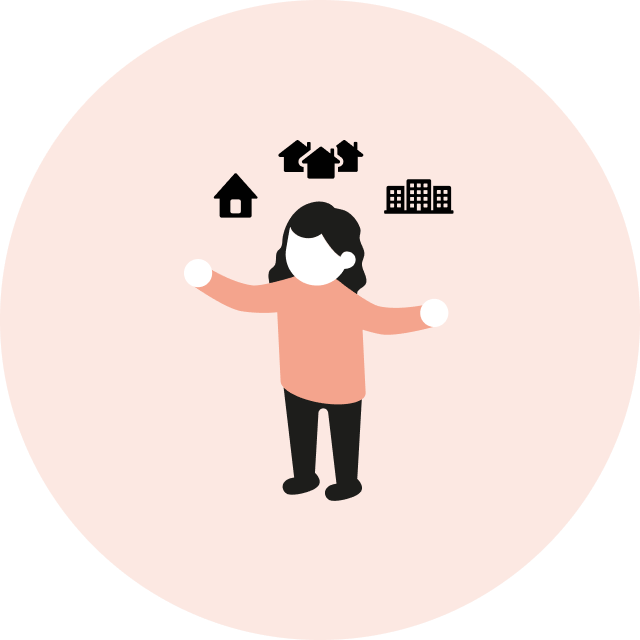
Strategically designed projects can have an impact on care practices at multiple levels, from the home to the neighbourhood and city scale. For example, a project on a city scale could be to develop a new design standard for public furniture that enables playful learning through child-caregiver interactions. Installed in a neighbourhood, this furniture could become a new community gathering space, stimulating increased economic and social exchange in the implemented locations. This can further influence how caregivers and children interact in a home environment and support their learning discussions and habits. Therefore, when designing, it is important to reflect on potential positive and negative impacts of a design across these three scales. Repeat this reflection as your design proposal develops and in different moments of the project life cycle.

TOOLS
Design across scales is a template for exploring the impact of your ideas across the home, neighbourhood and city scale.
Shadowing is a tool designed to gain a deep understanding of the experiences of young children, their caregivers and pregnant women through their everyday interactions within various scales of a city.

GET INSPIRED
Explore how the program “De Cero a Siempre” (From Zero to Forever) created a national and territorial strategy for the comprehensive care of childhood and early childhood in Colombia.
Explore how the “Juguetes Urbanos” (Urban Toys) project in Mexico City ran a city-wide design competition on playful public spaces in order to inform public policy design guidelines.
Step 4
Benchmarking
Get inspired by good practices
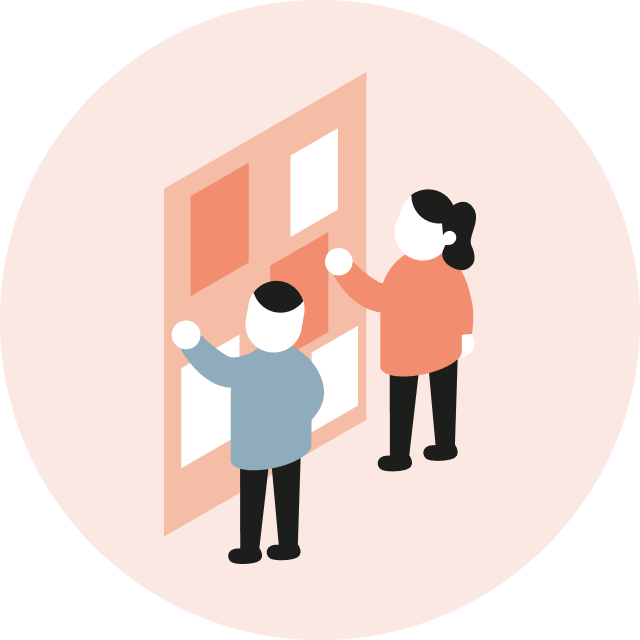
When designing, it is important to set a standard of agreed measures or precedents to assess proposals and compare existing or proposed performance data against best practices. These can be inspirational, but realistically adapted to your context. An ideal approach is to design a playbook of precedents together with your collaborators and communities, that embody the shared vision and direction. To do so, get inspired by the best practices included in the guide’s Knowledge Hub. If you aim to achieve positive behavioural change, it is crucial to expand your benchmarking practice outside your industry or sector and include comparison criteria from other areas of expertise (e.g., childhood development, social science).

TOOL
Design challenge is a method that can be used for gathering ideas and for raising the visibility of your project.
A mood board can help you to identify the relations within your project or team, test and refine your ideas, and connect best-practice examples from different fields of practice and knowledge.
Discussion forum brings different experts and public together to discuss an interdisciplinary topic. It is a great way to expand your knowledge and ideas, and to identify performance markers for a specific challenge at hand.

GET INSPIRED
Check the City at the Eye Level for Kids, a publication that offers numerous examples of child-focused projects from different urban contexts.
Parques Naturalizados (Naturalised Parks) by Alana Institute offers principles and ideas on connecting children with nature [in Portuguese].
Step 5
Co-creation
Co-create solutions with children, caregivers and pregnant women
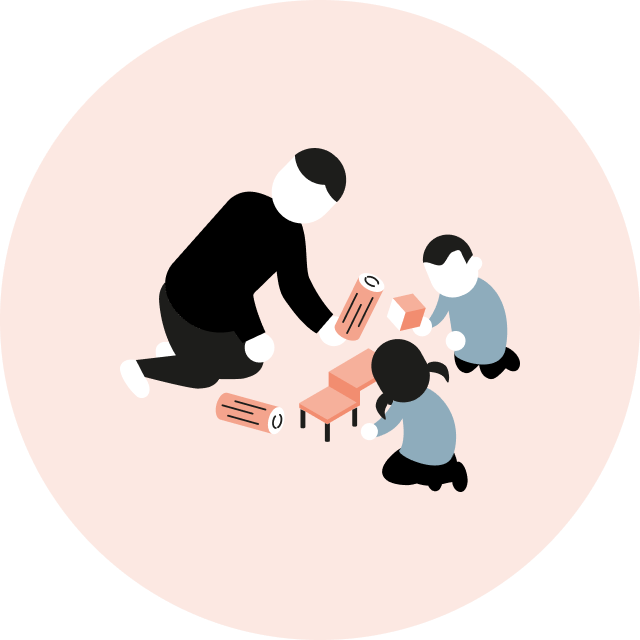
Opportunities for co-creation activities should be mapped and planned throughout the life cycle of the project. For every opportunity, clearly define the purpose, the way you will analyse the information gathered, and how that knowledge will inform the project. Have in mind that co-creation should not only be about urban design solutions, but also about the sustainable operation and maintenance of the project, and the supporting policy requirements. Think about the diversity of methods that you can use to avoid fatigue and enable people with different knowledge, abilities, interests and availability to feel comfortable and motivated to take part. When co-creating with children use playful engagement tools and think about ways of translating their thoughts and ways of expressing themselves into the design proposal. Consider film, photography or voice recordings, for example. Also, when organising co-creation sessions be sensitive in considering what time of the day or week would be most effective and take advantage of pre-existing activities, holidays and community gatherings

TOOL
Co-creation workshop sheet will help you think of the main elements of a creative way of co-designing.
Proximity of Care design ideas is a compilation of a few design strategies for child and family-friendly cities. These can serve for inspiration, or as a starting point for co-creation workshop options.
Test and select is a form of a spatial survey that can be used to understand ideas and experiences of young children.

GET INSPIRED
Check the Playful Cities Toolkit to explore a set of co-creation tools for engaging with children.
Check the Play for ALL Design Guide which offers a broad set of ideas for integrating play anywhere in a city. This publication contains a card-set of ideas that can be printed and used in co-creation workshop as inspiration and for opening conversations about design options.
The Block by Block program employs the video game Minecraft to engage children and adults into the planning processes.
See how the Khayelitsha Activated Play Network included a ‘Fun Day’ where local children took part of the construction process by painting a colourful wayfinding pattern with the silhouettes of their hands.
Read how the Children’s Participatory Budget Council in Rio de Janeiro tested allocating a portion of the municipal budget for priorities decided upon by children and teenagers to enhance their agency on the city creation process.
YARD app is a digital, augmented reality tool that can help us imagine how a neighbourhood might change with the addition of different urban design assets. Have a look at how it works here.
Step 6
Concept design
Develop a concept design considering opportunities for health, protection, stimulation and support
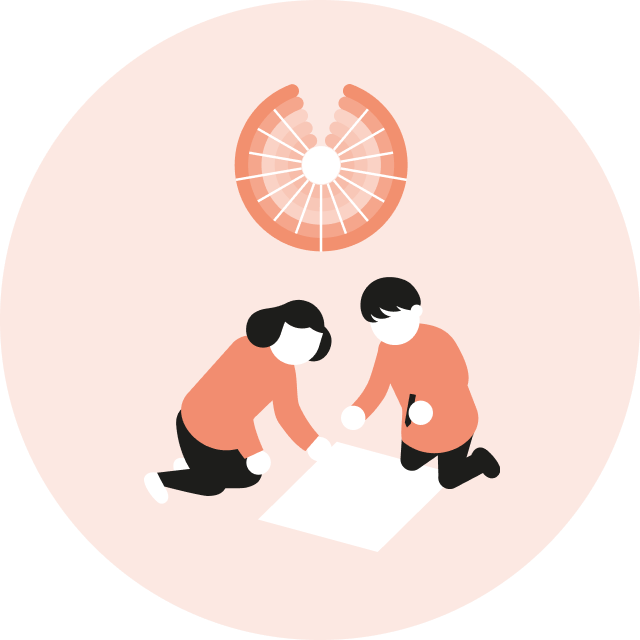
Concept design is an emerging plan and a step you will come back to after every visioning and co-creation session. Make sure that your concept design responds to the four dimensions of the Proximity of Care Framework for child development – health, protection, stimulation and support – and offers specific solutions to your identified priorities. This is the moment to reflect on the specific goals within each dimension to check that your proposal is truly focused on improving child development. Consider phased intervention and opportunities for testing the core design ideas through piloting and ‘meanwhile use’. Include the Behaviour Change Diagram that looks at hard and soft components of a design holistically. Make sure to mitigate the impact of climate events, design for resilience and incorporate opportunities for nature-based play.

TOOL
Fast idea generator uses simple actions that support out-of-the-box thinking. Use it to explore design options and creative solutions to challenging obstacles.
Deep dive into an idea can be used to explore one design concept deeply and compare it to alternative options.

GET INSPIRED
See how STIPO proposes a seasonal adaptive approach where instead of fighting against seasonal changes, spaces can benefit from a more flexible design approach to public space through seasonal affective design that leaves room for the children to shape their environment.
The 7 Cs is a set of design principles for outdoor play environments that connect to childhood development. This can help guide you while creating play spaces.
Step 7
Stakeholder validation
Share and validate your design with children, caregivers and pregnant women, along with other stakeholders
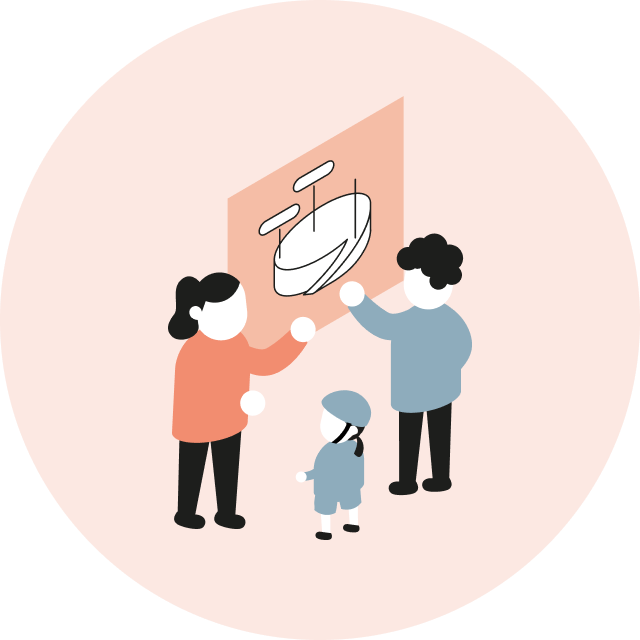
Plan to communicate the concept design proposal with the children, caregivers and pregnant women you are designing with, as well as with the wider community and other stakeholders. Children are often overlooked in this step, yet they can meaningfully contribute by evaluating and commenting on the proposed solutions. To be able to make children part of the process, you need to allocate time and resources to visually represent your design proposals. This could be in a form of a mock-up, 3D model, drawing, or a role-play. Before validating your proposal with any stakeholder group, reflect on the modes of representation and collecting feedback and how this responds to local context, culture and communication preferences. To learn more about communications and advocacy strategies visit the Influence section.

GET INSPIRED
Explore how the organisation Make Space 4 Play empowered local residents to take the lead in identifying locations and designs for strategic pocket parks and playgrounds within the city of Cairo.
Explore how Catalytic Action included young children and the wider community throughout the entire design process of renovating a public park at the heart of a low-income neighbourhood in Beirut.
Step 8
Detailed design
Develop a detailed design and cost-benefit analysis

Translating conceptual ideas into detailed design can move beyond the level of input from community members, as design decisions also need to comply with policies, design standards, health and safety procedures, maintenance and service schemes, and planning and construction procedures. To keep the community and other stakeholders engaged, keep them updated on the different steps of the detailed design development process. Communicate when decisions on elements that were significant during co-creation are resolved and be ready to discuss and explain changes and make decisions together. When applying your usual approaches to detailed design development, such as spatial standards, check these against the Proximity of Care dimensions and ensure that they align with the requirements of the people you’re seeking to benefit. Engage in due time with the competent authority around existing design standards, permits, and processes, and if possible, share with them the approach you adopted, and the co-creation process you went through. When developing your cost-benefit analysis, consider the wide range of benefits that a child and family-friendly approach generates. Evidence shows that investing in early childhood is one of the most cost-effective ways to achieve socioeconomic goals in the medium and long term.

GET INSPIRED
Praças da Infancia by Estúdio+1 is a toolkit that provides detailed information about natural elements that can be incorporated in the design of public spaces, as well as landscaping options (in Portuguese).
Global Street Design and Designing Streets for Kids by NACTO offer a range of design standards and ideas for redesigning streets, so they are safe and stimulating for children and caregivers.
See how the Building as Learning Aid program in India transformed architectural details of school building into playful elements for learning.
See how the Safe Walking Route intervention by Urban 95 in Lima designed special handrails – one at adult height and one at toddler height – for caregivers to walk safely to their local childcare centre.
Playground ideas for 0-3 years old by Urban95 is a publication that illustrates diverse needs and abilities of young children and provides design ideas that respond to this diversity.
Tailored Advice: DESIGN
Click the icons below to read our tailored advice.

City
authorities

Urban
practitioners

Early childhood development practitioners

Developers
City authorities
- As you develop a vision with the project community, provide practical examples and case studies on the impact of different policies and strategies to people you are engaging with. This can help them better understand what could be possible, as well as the constraints.
- When translating challenges and opportunities into design ideas, include a child-friendly design checklist that matches an existing city policy framework. This could help you directly inform prioritisation of projects across different scales and typology (public, private or mixed).
- Consider partnering with urban practitioners and local organisations that often have innovative approaches to co-creation.
- Consider creating a catalogue of best practises within your area/city that could help as inspiration for practitioners or developers and set the standard of ´what good looks like’ for your city.
- Explore different ways of incorporating play in regeneration projects, standards and policies across departments (e.g., how could you collaborate with the transport team to incorporate play in infrastructural upgrades?)
- When presenting your proposal to the project community and wider stakeholders, make sure to communicate which parts of your proposal are fixed and why, and what can still change. This is a great opportunity to discuss potential roles and responsibilities of other stakeholders in the implementation phase.

Urban practitioners
- Involve an early childhood development practitioner in the visioning process. They may help focus on ideas that are relevant to childhood in your location.
- Clearly define themes or areas of the design that are open for community’s input and co-creation, to manage expectations. Spend time developing a strategy for incorporating inputs from various co-creation sessions with different stakeholders.
- Use the elements of the local natural landscape like vegetation, topography, and views, to offer different stimulation experiences such as active, imaginative and sensory play. Incorporate seasonal changes into your design, as well as play with loose parts such as boulders, logs, seeds and leaves.
- Consider the environmental impact of your proposed design across different urban scales. For example, how do plants that you propose contribute to the habitat diversification and how is rainwater managed, protected against or harnessed?
- Tailor your design to parameters like children’s height, a pram/stroller’s required width, or the inclusion of baby changing stations in every gender of public toilets.
- Use public engagement moments as opportunities to invite people you want to influence through your project. Have a look at the Influence stage that can support you in defining your approach.

Early childhood development practitioners
- Become a sounding board or advisor to the design team, especially on providing feedback that considers the needs and preferences of young children and caregivers in the proposed project.
- You may advise on how to co-create with young children and caregivers and make sure their participation is effective in the process.
- Consider what additional interventions might be needed to ensure positive behaviours prompted by enhancements to public spaces, such as the ways of bringing increased play, exercise, interactions, reading and storytelling into the home and regularly reinforcing those habits.

Developers
- Even if you already have a long-term vision for a place, organise consultation and co-creation sessions with your target communities to prioritises elements of your development framework. Start with an open mind and without showing visuals that direct people into details or directions. Listening and creating a broader pool of ideas provides you with more options as you develop and refine your vision in partnership with the community and other stakeholders.
- Create a clear plan of negotiable and non-negotiable components of the development scheme and explain this clearly and transparently, as a starting point for co-creation design and planning. Try to be clear what aspects of the proposal are still flexible and subject to change. Rather than informing people what the design is, discuss with them how to reach a win-win solution.
- Consider KPIs that asses successful development concepts across the different dimensions of the Proximity of Care Framework and home, neighbourhood and city scales of proximity. For example, is the network of pedestrian routes you are planning safe and functional for children, caregivers and pregnant women to access local public services and community spaces?
- Review relevant projects within your portfolio or delivered by others, to get ideas and markers of how you could improve your performance against your social value targets and ESG commitments.
